- Industries
Industries
- Functions
Functions
- Insights
Insights
- Careers
Careers
- About Us
- Marketing & Advertising
- By Omega Team

Generation Z is the generation after the Millennials, holding a whopping $143 billion of buying power as of 2019. Specifically, they were those born from 1995 to 2012. In 2020, Generation Z became the biggest generation in America at 86 million, surpassing Millennials by almost 4 million, and over the next two decades, Generation Z are forecasted to increase by 2 million more due to migration. The current percentage of populations of each generation in the US is shown in Figure 1.
Figure 1: US population by generation in percentage
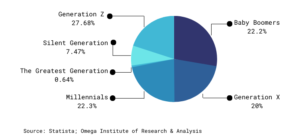
Exhibit 1: Favorite Entertainments by Generation

What Do Generation Z Do in Their Spare Time?
As shown in exhibit 1, the decline in TV viewing among younger audiences has been documented. The youngest generation is looking for video games, music and other forms of entertainment ahead of television and movies. A solid majority of Generation Z, millennials and Generation X respondents said that during the pandemic, video games have helped them stay connected to other people and get through difficult times.
Keywords of Shopping Behaviors
Omnichannel
According to an exclusive survey of 1,300 Vogue and GQ readers in the US. Key findings show that this cohort is engaged with their brands while searching for newness and eager to discover new trends that keep them fashion-forward. They’re willing to shop across channels, have an appetite for higher-quality items and are eager to stay on top of cultural trends. At the same time, they have some frugal tendencies: 70% of Generation Z said they are monitoring their spending more closely as a result of the pandemic.Generation Z does not have a preference for shopping online or in-store. They choose the more suitable option at the moment. The survey shows that Generation Z are 56% more likely to have shopped for fashion in-store and 38% more likely to have shopped online in the same timeframe. Online communities can also translate to purchases. Tik Tok #thetiktokfashionmonth challenge helped inspire Generation Z to shop. The hashtag garnered 5.5 billion views. Digital has a great impact on Generation Z’s retail purchases. 3 in 4 profess to check a store’s mobile application for special offers while shopping and 2 of 3 check store apps for discounts on a regular basis outside of shopping. The reasons that Gen Z choose a shop are shown in figure 2.
Figure 2: Online Shopping Sites that Gen Z prefer
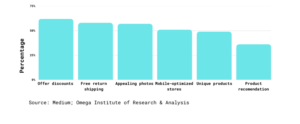
Technology
48% of Generation Z shoppers would like to see brands using technology that enabled consumers to customize products for themselves and 54% value tools that enable products to be tried out/on in-store. Gen Z expect to see technology being used across channels to enhance their retail experience, with 31% looking for brands to use more interactive screens to help them go online while in-store. Innovation is also something Generation Z sees as crucial to a more customizable shopping experience – 39% would like to see robotics being used to help customers make purchase decisions or deal with order issues.Beauty and Fitness
Generation Z is the first generation to use social media in their formative years, and it is pressuring teens to look good. According to a survey by the American Psychological Association, nearly one-third of US teen girls feel bad when comparing themselves with others they see on social media, and other studies have found links between social media usage and low self-esteem. These kinds of pressures drive up spending on beauty products and services and fitness services. US teens are already growing their spending on beauty. The volume of beauty content on YouTube rocketed by 200% between 2015 and 2016, and female consumers ages 13–24 make up 47% of the audience for these videos. Large, established multi-brand companies are likely to acquire beauty brands that resonate with Gen Z as the generation’s spending power accelerates.Sustainability
Along with Millenials, Generation Z is pushing for a more sustainable and eco-friendly market in various industries. For younger generations, a product’s ecological footprint is very important. They seek high-quality and long-lasting products as opposed to disposable items. At the same time, sustainable materials find their way into this environmentally conscious generation. Generation Z respects brands that are highly conscious of the marks they leave on the environment. In a study by FirstInsight shown in figure 3, about 73% of Generation Zs are willing to pay more for environmentally-friendly products.Figure 3: Percentage of the Customers willing to pay for more environmental-friendly products in 2020

What Do They Want From The Brands?
Having 24/7 access to information and digital resources has made Generation Z customers more educated, knowledgeable, and self-reliant in deciding which products and services to choose or brands to support. Generation Z expect a seamless interaction with brands across the entire digitally integrated enterprise. They want to actively share their opinions, collaborate, and co-create with brands. In the process, they expect brands to be highly responsive to their needs. IBM Institute for Business Value conducted a survey of 15,600 Generation Z from 16 countries. In the report, they explore the shopping habits and values of Generation Z consumers and the need for brands to provide:
Consistent delivery of retail essentials.
Generation Z consumers expect accurate inventory information, good value for their money, and a wide assortment of choices when shopping.Technology that provides value and convenience.
Generation Z consumers appreciate innovation, but only if it can remove friction and empower them to engage with the brand on their terms.Individualized shopping experiences.
Generation Z consumers want direct value that is tailored to them individually and the ability to co-create an experience that is uniquely their own.Generation Z’s Favorite Brands
Generation Z’s most loved brands illustrate the distinctiveness of their consumer tastes, with tech, entertainment, and foods brands outperforming other categories. Only Gen Z adults (age 18-21) are included in this ranking. Favorability, trust, community impact and net promotion are used to determine the ranking, shown in exhibit 2.
Strategies To Win Generation Z
Conduct Meaningful Interactions
Retaining an existing customer costs much less than acquiring a new one. Generation Z is especially a harder group to retain than the others. They are concerned less about the brand appeal and less likely to be motivated by loyalty programs, but they are eager to interact with their favorite brands. In fact, although Generation Z is the hard marketing target, they reflect stronger brand consciousness and better customer loyalty as exhibit 3 shows. Hosting games, events and asking for ideas and feedback are the meaning interactions can be provided by brands.Exhibit 2: The Top 25 Most favorited Brands by Generation Z
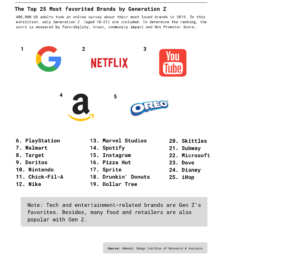
Exhibit 3: Millennial and Generation Z consumer relationship with brands worldwide in 2017
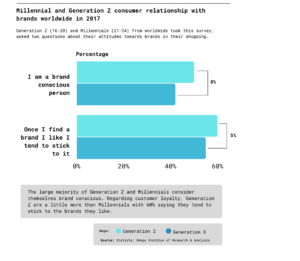
Personalize Shopping Experience
Providing relatable and relaxed messages is much more useful than aggressive sales. According to Google, 26% of teenage shoppers expect a more personalized experience based on their shopping habits and preferences. In comparison, only 22% of Millenials and 11% of Baby Boomers have this expectation. One of the easiest ways to do this is to personalize the shopping experience by email list segmentation.Optimize Mobile Experience
As shown in exhibit 4, according to the survey by IBM, 75% of Generation Z select smartphones as the device they use most. According to Google, among all age groups, across ethnicity, teens mostly use their smartphones to make purchases.Focus on the Right Platforms
Generation Z showcase their aspirational selves on Instagram, share real-life moments on Snapchat, get news on Twitter and glean information from Facebook. Instagram is the most popular app for brand discovery, with 45 percent of teens using it to find new products. When it comes to shopping recommendations, Youtube is the platform of choice at 24%, followed by Instagram at 17% and Facebook at 16%. Snapchat is overwhelmingly U.S. teens’ favorite platform at 45 percent, surpassing all other platforms.Generation Z especially loves videos and pays special attention to video marketing. But the research shows that they click “skip” on skippable ads after only 9.5 seconds, longer than other generations. It is important to make the videos shorter and more concentrated.
Partner With Influencers
Influencer marketing is powerful, especially with Generation Z. Google found that 70% of teenagers relate to Youtube creators more than traditional celebrities. Over 44% of Generation Z tried a recommendation from a digital creator, more than products promoted by celebrities.Exhibit 4: What Are the Most Frequently Used Devices of Generation Z?

Exhibit 5: Reasons Teens Shop Online
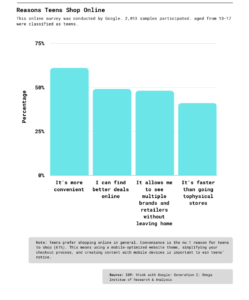
Conclusion
Generation Z is a huge growing market. Here’s what businesses need to know about Generation Z’s lifestyle and consumption habits. Due to the particularity of the growth environment, Generation Z and other generations have many significantly different habits and views, and the brand needs to adopt different strategies for their marketing. In general, personalization and mobile platforms are the two most important elements. Generation Z attaches great importance to interacting with merchants and participating in events. Merchants or brands need to win over Generation Z through technology and strategy to make them obtain the experience they prefer. In addition, digital influence is key to Generation Z customers, including strategies to leverage digital influencers and enhance the functionality of mobile apps.
Subscribe
Select topics and stay current with our latest insights
- Functions